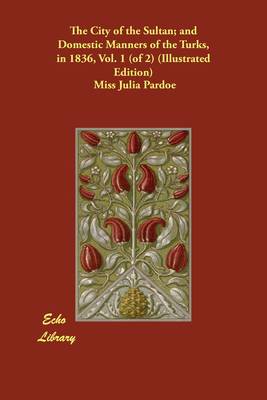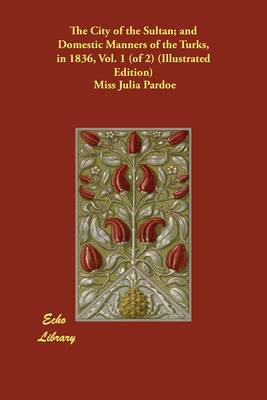
- Afhalen na 1 uur in een winkel met voorraad
- Gratis thuislevering in België vanaf € 30
- Ruim aanbod met 7 miljoen producten
- Afhalen na 1 uur in een winkel met voorraad
- Gratis thuislevering in België vanaf € 30
- Ruim aanbod met 7 miljoen producten
Zoeken
The City of the Sultan; and Domestic Manners of the Turks, in 1836, Vol. 1 (of 2) (Illustrated Edition)
Julia Pardoe
Paperback | Engels
€ 13,95
+ 27 punten
Omschrijving
Julia Pardoe (1804-62) was an English poet, novelist, historian, and traveller. Born in Beverley, Yorkshire, she was the second daughter of Major Thomas Pardoe who had served in the Peninsula campaigns of the Napoleonic Wars and fought at Waterloo. She began writing at an early age and published her first work, The Nun: A Poetical Romance, anonymously in 1824. Her first novel Lord Morcar of Hereward (1829) was also published anonymously. Like many others in the early 19th century she travelled south to benefit from the warmer climate and thus avoid tuberculosis, and her first travel book, Traits and Traditions of Portugal, was published in 1833. A trip to Turkey with her father inspired her best-known work, The City of the Sultan and Domestic Manners of the Turks, published in two volumes in 1837, in which she presents the Turkish upper-class with sympathy and humanity. Volume I offers the reader an insight into harem life, betrothal and marriage customs, religious practices, and many other aspects of the daily life of a well-to-do Turkish household, and is illustrated with engravings, the majority from her own drawings. The book became so popular that it was republished in 1838, 1845, and 1854, and was followed by The Beauties of the Bosphorus in 1838.
Specificaties
Betrokkenen
- Auteur(s):
- Uitgeverij:
Inhoud
- Aantal bladzijden:
- 248
- Taal:
- Engels
Eigenschappen
- Productcode (EAN):
- 9781847025005
- Verschijningsdatum:
- 27/10/2020
- Uitvoering:
- Paperback
- Formaat:
- Trade paperback (VS)
- Afmetingen:
- 152 mm x 229 mm
- Gewicht:
- 367 g

Alleen bij Standaard Boekhandel
+ 27 punten op je klantenkaart van Standaard Boekhandel
Beoordelingen
We publiceren alleen reviews die voldoen aan de voorwaarden voor reviews. Bekijk onze voorwaarden voor reviews.











